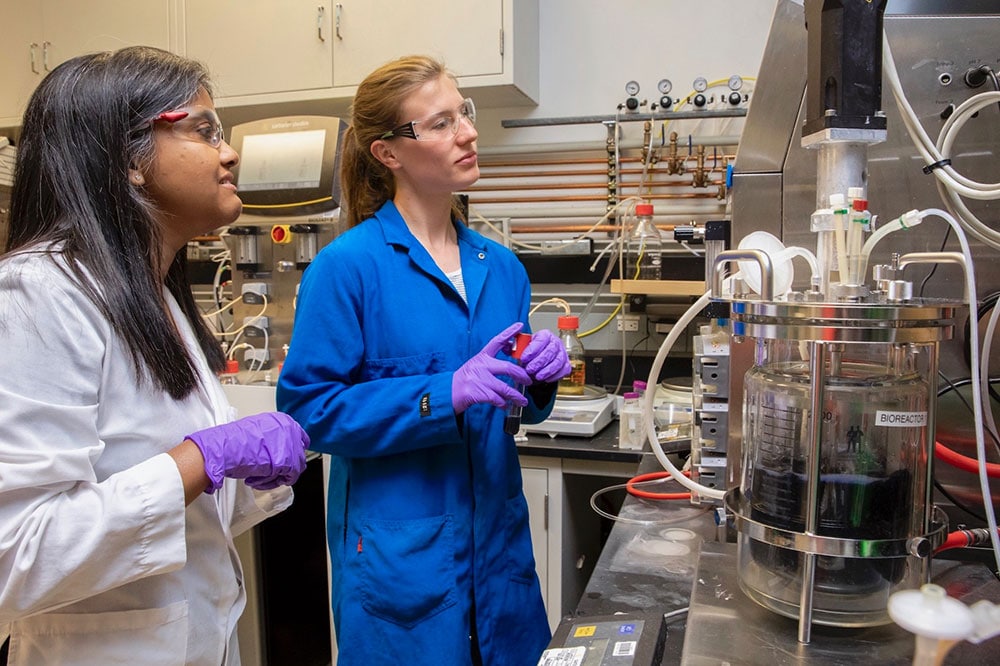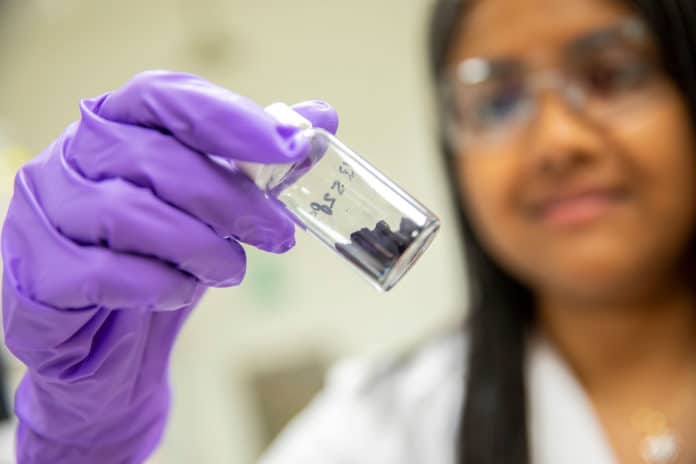A team of scientists from the Department of Energy’s Joint BioEnergy Institute (JBEI), has investigated microbe-based biomanufacturing led straight to an eco-friendly production platform for a blue pigment called Indigoidine.
With a similar vividly saturated hue as synthetic indigo, a dye used around the world to color denim and many other items. The team’s newly fungi-produced Indigoidine could provide an alternative to a largely environmentally unfriendly process.
“Originally extracted from plants, most indigo used today is synthesized,” said lead researcher Aindrila Mukhopadhyay, who directs the Host Engineering team at JBEI. “These processes are efficient and inexpensive, but they often require toxic chemicals and generate a lot of dangerous waste. With our work, we now have a way to efficiently produce a blue pigment that uses inexpensive, sustainable carbon sources instead of harsh precursors. And so far, the platform checks many of the boxes in its promise to be scaled-up for commercial markets.”
The commercial markets already have considerable demand for what the scientists hope to supply. In a search, the team found that many companies are eager for more sustainably sourced pigments because customers are increasingly aware of the impacts of conventional dyes.
“There seems to be a shift in society toward wanting better processes for creating everyday products,” said Maren Wehrs, a graduate student. “That’s exactly what JBEI is trying to do, using tools derived from biological systems – it just so happens that our engineered biological platform worked very well.”
Researchers tested a hardy fungi species called Rhodosporidium Toruloides that how well it could express nonribosomal peptide synthetases (NRPSs). NRPSs are large enzymes that bacteria and fungi use to assemble important compounds. After examining this fungi’s NRPS expression capability, scientists then chose an NRPS that converts two amino acid molecules into Indigoidine – a blue pigment – to make it easy to tell if the strain engineering had worked. When it did, very simply, the culture would turn blue.

However, initially, the team was not interested in Indigoidine itself. Instead, they were focused on the larger picture, exploring how the assembly line functionality of these enzymes could be harnessed to create biosynthetic manufacturing pathways for valuable organic compounds, such as biofuels, and assessing whether or not the fungi represented a good host species for the production of these compounds.
But when they cultivated their engineered strain and saw just how blue the culture was, they knew something incredible had happened.
With an average titer of 86 grams of Indigoidine per liter of bioreactor culture, the yield of the strain – which researchers named Bluebelle – is by far the highest that has ever been reported. The record-breaking yield was obtained from a culture process that uses nutrient and precursor inputs sourced from sustainable plant material. Whereas the previous methods required far more expensive inputs yet made about one-tenth the amount of Indigoidine.
In addition to the potential applications of the Indigoidine, their study was successful in the main objective of providing a potential production pathway for other NRPSs – which is much more valuable than any single product.
In this complex enzyme, there are multiple subdivisions that show a different and predictive action in assembling a compound out of smaller molecules. Scientists at JBEI and beyond are keen to engineer enzymes that use NRPSs’ Lego block-like features to produce advanced bioproducts that are currently hard to make.
“A big challenge is to get a microbe to efficiently express such enzymes. This host has huge potential to fulfill that need,” said Mukhopadhyay.
The team’s next steps will be to characterize how Indigoidine could be used as a dye and to dig deeper into the capabilities of R. Toruloides.
Journal Reference
- Maren Wehrs, John Gladden, Yuzhong Liu et al. Sustainable bioproduction of the blue pigment indigoidine: Expanding the range of heterologous products in R. toruloides to include non-ribosomal peptides†. Green Chemistry. DOI: 10.1039/C9GC00920E
